8 Helping Students Build Resilience
Lynn Meade

It was Monday morning after a weekend of snow and I knew many of my students wouldn’t be there. I was worried about one particular student’s safety so I messaged him. I wrote, “There is still ice and snow on the sidewalk, you don’t need to come to class today.” You see, I was worried because he is blind. I knew the campus would be hard for him to navigate with patched sidewalks and black ice.
I made my way to class amid the slush and icy spots to be greeted by my small class with him in the front row. I walked over to him and said, “I messaged you to tell you that you don’t have to come out in this weather.” He replied, “I know, I just didn’t want to miss class.” “But there are some pretty patchy spots out there,” I said. He laughed, “I know all about the ice. I hit a patch and fell flat on my back earlier today. It knocked the wind out of me. The good news is I think it popped my back. I needed that.”
I’m sure you can think of students that nothing seems to stop, and you also know students who seem to look for any reason to fail. What is the difference, you ask? The answer is resilience. Resilience is adapting to challenging life experiences, especially through mental, emotional, and behavioral flexibility. While resilience is only one part of the story, it is a critical part of the story.
Deb Korth wanted to find the difference between those who graduated and those who didn’t. Korth writes, “One thing that we know is that students who enter college with higher high school GPAs are more likely to be successful than those who enter with lower high school GPAs. I think the assumption is that students with higher high school GPAs are more likely to be successful in college than those with lower high school GPAs. Thus, we interviewed students who entered the university with lower GPAs but still graduated within four years. These students told stories that included being very resourceful. For instance, several reported they would double check advice they were given by professors with the advice they would receive from their academic advisor. They were determined to ensure that their path to success was clearly defined.”
Angela Duckworth, a psychology professor, has made her name from studying grit. She defines “grit” as “sticking with things over the very long term until you master them.” She created a grit scale so people can self-assess their grit level. This can be a useful tool for starting conversations with students.
Like others before her, she discovered that it is not just intelligence, but grit that leads to success. Gritty people often outperform the most intelligent ones. Consider the following…
- at Ivy League schools, the grittiest students, not the smartest ones, had the highest GPAs.
- at West Point’s United States Military Academy, the best predictor of success at the rigorous summer program known as “beast barracks” wasn’t intelligence, leadership ability, or physical fitness, but rather a cadet’s grit score.
- at the Scripps National Spelling Bee, the students who were most likely to advance to the finals were the grittiest.
Another researcher, Brene Brown, looks at what makes resilient people. In her book, The Gifts of Imperfection, she identified common factors of resilient people. These are the things that give people the ability to bounce in the face of struggles.
- They are resourceful and have good problem-solving skills.
- They are more likely to seek help.
- They hold the belief that they can do something that will help them to manage their feelings and to cope.
- They have social support available to them.
- They are connected with others such as family and friends.
People Can Strengthen Their Resilience Muscles
It is one thing to identify what makes someone resilient and another to look at what we can do to strengthen resilience. Researchers conducted a meta-analysis examining 33 studies of 31,071 participants and found that increasing protective factors had a positive impact on resilience. What that means is that people can strengthen their resilience muscles by increasing their self-worth, self-esteem, and self-efficacy. We can coach our students in these areas.
Let me provide specific ways you can do that, but first I have to ask you, are you willing to be a charismatic adult? Watch this short video to find out.
How Can Coaches Help?
Praise the Process of Growth
Encourage students by highlighting their progress and improvement. For example, when you notice a student has improved in a class, send them a message saying, “I noticed that you have improved your math grade, your hard work is paying off.” You can also praise their problem-solving skills, such as, “It’s great that you met with a peer coach to help you schedule. You’re using your resources effectively.”
Many colleges have software where you can send “kudos” to students, which can be seen by their advisors and other stakeholders. Sending them notes lets the student know you notice their progress. When you send notes, the key is to accompany the praise with a note about their growth and hard work.
Give Them the Tools to Be Self-Sufficient
- show students how to sign up for tutoring and then have the students do it themselves while you’re still with them.
- help students fill out a weekly calendar with study and project times, then have them complete the full semester calendar on their own.
- provide links to important forms or documents and trust them to complete them, but also follow up to ensure they understand how to submit them.
Model and Encourage Gratitude
As coaches, we can impact students’ attitudes by modeling and encouraging gratitude. Research shows that individuals who exhibit higher levels of gratitude are likely to be more resilient in challenging situations.
According to Husain and Pal, gratitude helps build resilience in these ways.
1. Perspective Change: Even in the face of hardship, gratitude enables people to change their perspective and concentrate on the positive aspects of their lives. It helps individuals see the good in challenging circumstances and helps them see lessons, purpose, and silver linings.
2. Emotional Health: Gratitude fosters good feelings like happiness, satisfaction, and appreciation. These feel-good feelings serve as emotional reserves in trying times, helping people stay resilient and handle stress well.
3. Social Support: Being grateful helps people recognize and value the help they get from other people. People who express thanks to their support system for their assistance fortify their bonds with one another, develop a feeling of community, and establish a nurturing atmosphere that encourages resilience.
4. Increased Resilient Coping: Gratitude improves problem-solving and coping abilities, which leads to resilient coping strategies. People who have an appreciative mindset are more inclined to look for answers and adjust to change.
Talk About Resilience
Having conversations about resilience can have a positive impact.
Ask Them to Bring You a Quote
Ask your students to bring a quote, poem, or song representing a resilient attitude. Ask them to explain why they chose that one. I have a guest book in my office and I ask students to sign it and to bring me a quote. I also have a song list of overcoming songs and I ask students to help me expand my list. Students love to share what they know and songs and quotes are easy ways to start those conversations.
Ask About Their Resilience Heroes
Ask your students to talk about who they look to as a pillar of grit and resilience. Allow them to share reasons why they think that person has been able to push through difficult situations.
Let Them Tell You Their Perseverance Story
Ask them to tell you when they had to work hard to push through. Remembering past times of resilience helps students build confidence for future encounters.
Use the Resilience Scale
Use Duckworth’s grit scale or Wagnild and Young’s resilience scale as a conversation tool. Ask your student to complete one of these and then discuss the results.
Help Students See Growth Opportunities Instead of Failures
Failure is just the raw material of success.
One of the principles of design thinking is
that you want to ‘fail fast and fail forward,’
into your next step.
It’s not to avoid failure.
In fact, failure can be a launchpad for creativity.
-Bill Burnett and Dave Evans.
Try This Reframing Exercise to Help Student Develop Failure Immunity
Failure immunity is a crucial skill for students to develop, as it helps them bounce back from setbacks and view challenges as opportunities for growth. Coaches can use the following reframing exercise, inspired by Bill Burnett and Dave Evans’ book “Designing Your Life,” to help students build resilience and failure immunity.
Step One: Log failures.
Ask them to list some of the failures weighing heavy on them. Have them write down specific times they messed up.
Step Two: Categorize failures.
Draw three columns and instruct students to categorize their failures into:
- Screwups – Simple mistakes that don’t typically happen. You usually get it right, but this time you just screwed up.
- Weaknesses – Recurring failures tied to personal limitations. You seem to keep making the same mistake over and over.
- Growth Opportunities – Things that didn’t have to happen and they don’t have to happen again. A fix is available.
Step Three: Identify Growth Insights
Focus attention on the “Growth Opportunities” column.
Use guided questions to help students reflect on these experiences and identify areas for improvement:
- What insights did you gain from this failure?
- How could you approach this situation differently next time?
- What skills or knowledge do you need to develop to prevent this type of failure in the future?
- Who could you reach out to for support or advice in addressing this issue?
The goal is to reframe failures as learning experiences that can build resilience, rather than viewing them as permanent setbacks. By taking this structured approach, coaches can empower students to develop failure immunity.
Sample Developing Failure Immunity: A Reframing Exercise |
||||
| Failure | Screwup | Weakness | Growth Opportunity | Insights |
| Failed my history test | XXX | Need to make study sheets weekly and review regularly rather than cram. | ||
| Missed the deadline to apply for a scholarship | XXX | XXX | I struggle with calendars and timing and it is a weakness of mine, but if I sit down the first week of the semester and put things in my calendar, I might be less likely to miss things. | |
| Overslept my biology lab | XXX | I never oversleep so I didn’t even think to set an alarm. I screwed up, but it won’t likely happen again. If I think I am too tired the night before, I might set an extra alarm | ||
| I failed several classes and am now on academic probation | XXX | I need to get help sooner. When I am struggling in classes, I should talk to the teacher and get tutoring instead of hiding from the problem. Now that I’m on probation, I need to get a plan for how to get back on track. | ||
You can work students through this failure immunity process or use these prompts to help them discuss growth opportunities.
- When did you make a mistake where you learned a meaningful lesson?
- It has been said that experience is the best teacher, what lesson did you have to learn the hard way and how does that lesson help you today?
Coach Resilience
In conclusion, the ability to develop resilience is a critical skill for college students. While some students may initially appear to be more naturally resilient than others, research shows that resilience can be strengthened through intentional strategies. As coaches, we play a vital role in helping students build their resilience muscles. By praising their process of growth, equipping them with tools for self-sufficiency, and modeling the power of gratitude, we can empower students to reframe failures as learning opportunities and overcome challenges with grit and determination. Rather than viewing setbacks as permanent obstacles, we can teach students that it’s okay to fall – the key is to plan on failing forward. By helping them to be gritty we give students a powerful gift: the ability to not merely survive but to truly thrive in college and beyond.
In the process of creating more resilient students, we might just grow a little grittier ourselves.
Key Takeaways
- Resilience is adapting to challenging life experiences, especially through mental, emotional, and behavioral flexibility.
- Gritty people outperform others who are relying on natural intelligence.
- Resilient people have good problem-solving skills, seek help, have social support, are connected, and believe that they can do something to manage feelings.
- Coaches can help students build resilience by talking about resilience, praising growth, encouraging gratitude, giving the tools to be self-sufficient and helping students see growth opportunities instead of failures.
Unit Review
Our goal as coaches is to help our students succeed. Students who have a growth mindset believe that with effort that they can learn and grow in an area of their lives. Talk to students about the importance of effort and focus on their progress, not just outcomes. Encourage them to add the word “yet” to their self-talk (e.g. “I can’t do this yet”). We can help students understand that struggle and mistakes are a natural part of the learning process. By reframing setbacks as opportunities for growth, we teach them patterns of thought that can help them throughout their lives. By helping them develop grit and the ability to “bend” in the face of adversity, we can help them take small changes that matter.
James Clear in Atomic Habits suggests that those little things we do become the big things. “Every action you take is a vote for the type of person you wish to become. No single instance will transform your beliefs, but as the votes build up, so does the evidence of your new identity. This is one reason why meaningful change does not require radical change. Small habits can make a meaningful difference by providing evidence of a new identity. And if a change is meaningful, it is actually big. That’s the paradox of making small improvements.”
- How could you use what you learned about dysfunctional beliefs in your coaching practice?
- Write the answers for who you are, what you believe, and what you do as a way to try out this line of questioning.
Additional Resources
Recommended books on learning how to learn for students.
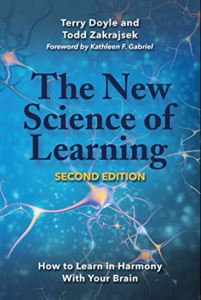
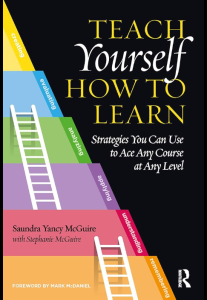
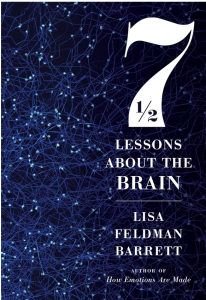
Recommended books on learning growth mindset and perseverance.
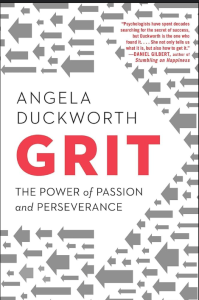
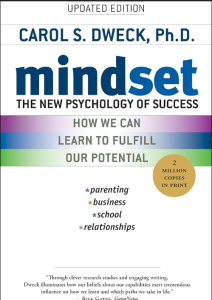
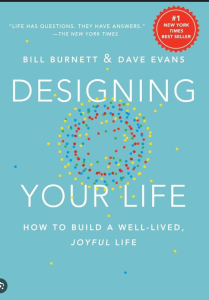
The New Science of Learning
The Resilience Scale
Pick the answer that shows how much you agree or disagree with each statement below. 1 = strongly disagree 2 = disagree 3 = slightly disagree 4 = neutral 5 = slightly agree 6 = agree 7 = strongly agree
1. When I make plans I follow through with them.
2. I usually manage one way or another.
3. I am able to depend on myself more than anyone else.
4. Keeping interested in things is important to me.
5. I can be on my own if I have to.
6. I feel proud that I have accomplished things in life.
7. I usually take things in stride.
8. I am friends with myself.
9. I feel that I can handle many things at a time.
10. I am determined.
11. I seldom wonder what the point of it all is.
12. I take things one day at a time.
13. I can get through difficult times because I’ve experienced difficulty before.
14.I have self-discipline.
15. I keep interested in things.
16. I can usually find something to laugh about.
17. My belief in myself gets me through hard times.
18. In an emergency, I am somebody people generally can rely on.
19. I can usually look at a situation in a number of ways.
20. Sometimes, I make myself do things whether I want to or not.
21. My life has meaning.
22. I do not dwell on things that I can’t do anything about.
23. When I am in a difficult situation, I can usually find my way out of it.
24. I have enough energy to do what I have to do.
25. It’s okay if there are people who don’t like me.
Wagnild, G. M. & Young, H. M. (1993). Development and Psychometric Evaluation of the Resilience Scale. Journal of Nursing Measurement, 1, 165-178.
References
American Psychological Association. (n.d). Resilience
Bandura, A. (1997). Self-Efficacy: The exercise of control. New York, NY: W. H. Freeman.
Brown, Brene (2010), The gifts of imperfection. Hazelden.
Burnett, B., & Evans, D. (2016). Designing your life: How to build a well-lived, joyful life. Knopf.
Burnette, J. L., O’Boyle, E. H., VanEpps, E. M., Pollack, J. M., & Finkel, E. J. (2013). Mind-sets matter: A meta-analytic review of implicit theories and self-regulation. Psychological Bulletin, 139(3), 655-701.
Burns, D. D. (1980). Feeling good: The new mood therapy. Avon Books.
Clear, J. (2018). Atomic habits: An easy & proven way to build good habits & break bad ones. Avery.
Duckworth, A. (2016). Grit: The power of passion and perseverance. Scribner.
Duckworth, A. (n.d.). Grit Scale
Hanford, E. Angela Duckworth and the research on ‘grit’. American Public Media.
Husain, A. and Pal, R. (2024). The relationship between gratitude and resilience among young adults. International Journal for Multidisciplinary Research, 6(3).
Institute of Coaching. Dr. Robert Brook’s Definition of Resilience and the Charismatic Advisor. YouTube. https://www.youtube.com/watch?v=3P1rpDGiVNU
Kamins, M. L., & Dweck, C. S. (1999). Person versus process praise and criticism: Implications for contingent self-worth and coping. Developmental Psychology, 35(3), 835–847.
Lee, J. H., Nam, S. K., Kim, A. R., Kim, B., Lee, M. Y., & Lee, S. M. (2013). Resilience: A meta-analytic approach. Journal of Counseling & Development, 91(3), 269–279.
Wagnild, G. M. & Young, H. M. (1993). Development and psychometric evaluation of the resilience scale. Journal of Nursing Measurement, 1, 165-178.
AI acknowledgment: This work was written by the author in its entirety. Claude AI was then used to refine some of the wording. Claude AI was also used to proofread the reference page.
Media Attributions from the H5P
J.K Rowling. Rowling at the Whitehouse Executive Office of the President, Public domain, via Wikimedia Commons. https://commons.wikimedia.org/wiki/File:J._K._Rowling_at_the_White_House_2010-04-05_8.jpg
Michael Jordan. Steve Lipofsky Basketballphoto.com, CC BY-SA 3.0 <https://creativecommons.org/licenses/by-sa/3.0>, via Wikimedia Commons
Nelson Mandela. 6th April 2000 Visit of Nelson Mandela to give a lecture at LSE on ‘Africa and Its Position in the World.’ Held at the Peacock Theatre. Library of the London School of Economics and Political Science, No restrictions, via Wikimedia Commons
Noah Lyles. Bob Ramsak, CC BY-SA 4.0 <https://creativecommons.org/licenses/by-sa/4.0>, via Wikimedia Commons
Thomas Edison. Public domain, via Wikimedia Commons. https://upload.wikimedia.org/wikipedia/commons/c/cb/Thomas_Edison%2C_1888.jpg
Media Attributions
- Don’t Quit © Lynn Meade
- Private: The new science of learning
- Private: Teach yourself how to learn
- Private: 7 and half lessons about the brain
- Private: Grit
- Private: Mindset
- Private: Design your life

